Xi'an, as the capital of Shaanxi Province, has become the fastest-growing city in Northwest China. Xi'an has numerous titles: it is one of the four ancient capitals of China and served as the capital for thirteen dynasties. It is also a renowned historic city in world history, where the unification of China by the Qin Dynasty and the splendor of the Tang Dynasty occurred. Here, the profound heritage of the Chinese nation, accumulated over thousands of years, continues quietly. Its charm needs to be experienced firsthand.
Climate
Xi'an has distinct seasons, with spring and autumn (March to May and September to November) being the best times for tourism.
- March to May: Spring in Xi'an is warm and dry, with frequent sunny days. This is also the blooming season, and popular places to enjoy the flowers include Qinglong Temple and Xi'an Jiaotong University, where cherry blossoms and peach blossoms can be admired. Xingqing Park and the Daming Palace National Heritage Park are vibrant with blossoms and sometimes host folk performances.
- September to November: Autumn in Xi'an is cool and pleasant, with golden hues everywhere. At the Big and Small Wild Goose Pagodas, the trees dress in orange, yellow, and green. You can also admire ancient ginkgo trees at Guanyin Temple and Daci'en Temple, while Osmanthus flowers bloom along the streets around the Bell and Drum Towers, filling the air with their fragrance. However, be mindful of the autumn rains.
- June to August: Summers are hot and sunny, with temperatures occasionally reaching 40°C. For attractions like the ancient city wall where shade is minimal, it's advisable to avoid midday and bring sun protection. During such weather, you can enjoy a cold Bingfeng soda or cool down at the music fountain at the Big Wild Goose Pagoda in the evening.
- November to March: Winters in Xi'an are cold, particularly windy, and occasionally foggy, with temperatures dropping as low as -4°C, so make sure to keep warm. If you’re lucky, you might witness snow in the ancient capital. Also, during this period, tourist numbers are relatively lower, so accommodation and ticket prices are usually reduced compared to peak season.
It’s suggested to spend 3-5 days exploring Xi'an. The city’s attractions are relatively concentrated, and the streets are structured, making navigation easy. The ancient city wall is the focal point; one kilometer north brings you to the Bell Tower, Drum Tower, and Muslim Quarter. Walking south from the city wall for about 20 minutes will take you to the Small Wild Goose Pagoda. Within a 3-4 kilometer radius are the Shaanxi History Museum, Big Wild Goose Pagoda, and the Tang Paradise, allowing for a straightforward sightseeing route connecting the city wall, Bell and Drum Towers, Muslim Quarter, and Small Wild Goose Pagoda, while grouping the Big Wild Goose Pagoda, Shaanxi Museum, and Tang Paradise together for exploration.
The Terracotta Army, Huaqing Palace, and Lishan Mountain are concentrated in the eastern area of Lintong District, which can be accessed by bus from the city. Depart early, and it is possible to complete the tour in one day and return. If visiting Huashan Mountain, take the high-speed train from Xi'an North Station to Huashan North Station; climbing the mountain should take 1-2 days.
For accommodation, it’s recommended to stay near the Bell and Drum Towers so you can reach a subway station within a 5-minute walk. Many attractions around Xi'an have nearby subway stations. The place where I stayed is conveniently located at the intersection of Line 1 and Line 2.
Xi'an's subway can be easily accessed through Alipay by searching for "Xi'an Subway Ride Code," which is very convenient. Some cities' IC cards can also be used here. For example, my card from Changchun works directly.
Day 1
● Terracotta Warriors and Horses
When mentioning Qin Shi Huang, people immediately think of this great monarch who unified the six states, and consequently, the magnificent Terracotta Army. Its fame is so great that tourists from around the world come to see it. The Terracotta Army is known as the "Eighth Wonder of the World." It is perhaps one of the most significant impressions of the city; nearly everyone visiting Xi'an is compelled to witness the grandeur of the Terracotta Army, and we are no exception.
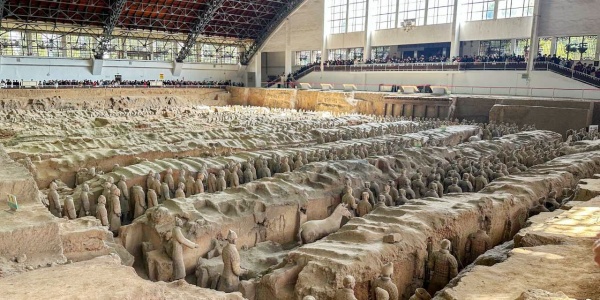
It takes about ten minutes to walk from the main entrance to Pit 1, passing through a small park area, which isn't too far. If you don’t want to walk, you can take an electric cart for five yuan per person, but I feel that’s unnecessary—it's better to walk if the weather is good. I personally recommend hiring a guide, or you may end up just looking at clay figures without a deeper understanding. I had reviewed several live streams from guides and related materials before coming, so I already knew a lot of what the guide would say. Thus, we opted not to hire one.
When Qin Shi Huang was alive, he was the emperor of one nation, and after his death, he wanted to continue his reign, so he moved everything from his life into the underground palace. The figures in front of you represent his soldiers. When the Terracotta Army was first unearthed, they were found in a disheveled state. The complete figures we see today have been restored by archaeological experts.
The soldiers range from a minimum height of 176 cm to a maximum of 196 cm, averaging over 180 cm. Historical records indicate that the average male height in the Qin State was only about 160 cm. Why are the soldiers so tall? Because they were equivalent to the emperor's imperial guards, representing the elite among elites, hence were selected for their stature. For instance, the ceremonial guards of various countries are known to be very tall.
Pits 2 and 3 are located on either side of Pit 1. They include nearly 2,000 ceramic figurines and horses, similar in size to real humans and horses. These pits contain charioteers, cavalry, and infantry, all arranged neatly and orderly. Although the impact is not as striking as Pit 1, each pit has its own unique team and purpose, making them equally worth seeing.
After exiting, you can follow the crowd or the signs to return to the main entrance. If you want to see the bronze chariots, you will need to take a free shuttle bus from the distribution center. However, even after getting there, you will have to take a smaller sightseeing bus to reach the museum; otherwise, it’s a lengthy walk. Personally, I feel it isn't worth the time, so for those short on time, I wouldn't recommend going.
For lunch, we found a local Shaanxi noodle shop next to the Provincial Museum and ordered Bingfeng, a drink that locals often have, to experience being a local.
● Shaanxi History Museum
"Give me a day, and I will return you ten thousand years." Here, the museum houses more than 370,000 artifacts, ranging from simple stone tools used by ancient humans to various items from social life dating back to 1840, covering a span of over a million years.
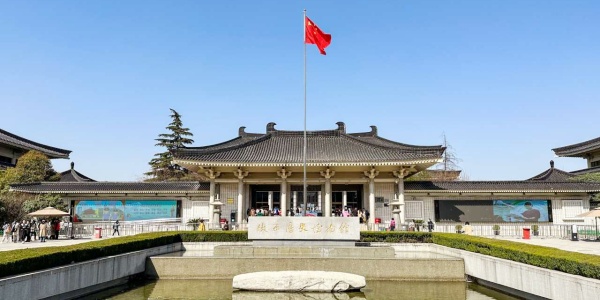
This is the Shaanxi Museum I've longed to visit. Luckily, since we arrived in the off-season, booking tickets was not very difficult. However, during peak season, reservations can be challenging. People often say, "For underground artifacts, visit Shaanxi; for above-ground artifacts, visit Shanxi." So when you come to the ancient capital of Xi'an, a visit to the museum is essential. The Shaanxi History Museum is the most famous and the richest in precious artifacts in Xi'an.
It's recommended to choose exhibition times when there are fewer people, ideally around lunchtime or in the afternoon. Definitely avoid visiting in the morning when it’s so crowded that it makes one question life itself.
● Xi'an City Wall
After finishing our tour at the Shaanxi History Museum, we headed to Yongning Gate. Many people come to Xi'an but overlook the city wall, where you can buy tickets to climb up for 45 yuan. The city wall we refer to today is the Ming City Wall of Xi'an, the largest and best-preserved ancient city wall in China.
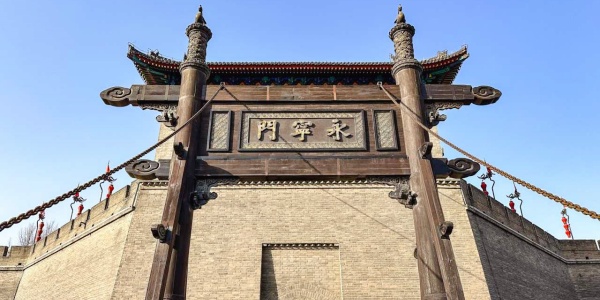
Strolling along the city wall is quite pleasant; the temperature is just right, neither too hot nor too cold, and a gentle breeze makes it very enjoyable. Midway, I suddenly decided to veer off from Jianguo Gate and head north along Jianguo Road, as I noticed plenty of little alleyways, which I enjoy exploring. Walking this way also leads to Yongxingfang.
● Yongxingfang
Shortly after walking, we arrived at Yongxingfang, which was also crowded. Yongxingfang is a place filled with various Shaanxi delicacies, similar to a commercial food street. In the evening, it’s great to stroll around here, with its ancient charm.
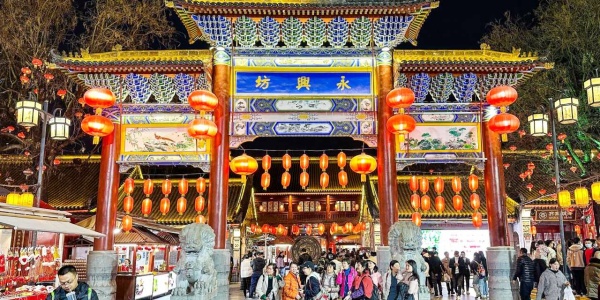
Day 2
This morning, we walked from the hotel to Gao Family Courtyard. We stayed at a location where the first and second subway lines intersect, right in the center of the city, making it a short one-kilometer walk.
● Gao Family Courtyard
Walking along the Muslim Quarter, you come to the secluded Gao Family Courtyard. This courtyard is the former residence of Gao Yuansong. Gao Yuansong was born in Zhenjiang, Jiangsu, and during the tenth year of the Tongzhi reign, his offspring achieved second place in the national examination, earning a plaque from the emperor. The overall architectural style bears distinct characteristics of Northern Shaanxi and reflects the living conditions of Northwest China in earlier times, making it worth a visit. The entrance fee is also quite affordable.
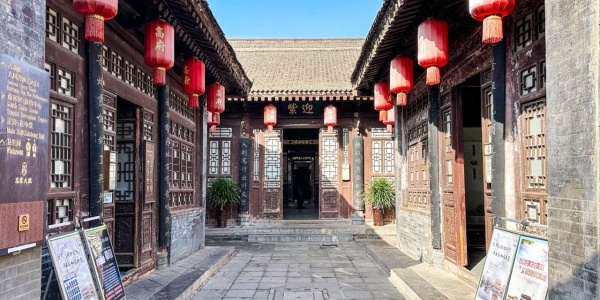
● Muslim Quarter
The Muslim Quarter gathers the diverse food offerings of Xi'an, including many well-known eateries, though it's not typically chosen by locals. For tourists, it is indeed a convenient and comprehensive food street.
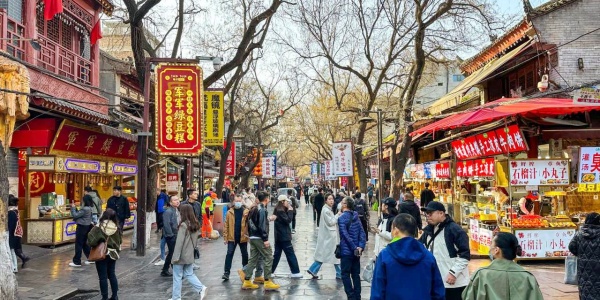
The Muslim Quarter is not just a single street but rather a large area. It’s not recommended to eat at the section under the Drum Tower, as that area tends to be overpriced; I recommend exploring places like Beiguangji Street, Beiyuanmen, Xiyang Market, Dapiyuan, and Sajinqiao.
● Bell Tower & Drum Tower
The Drum Tower and Bell Tower are 200 meters apart, and these two Ming Dynasty structures complement each other. They are among the largest and best-preserved drum tower relics in China.
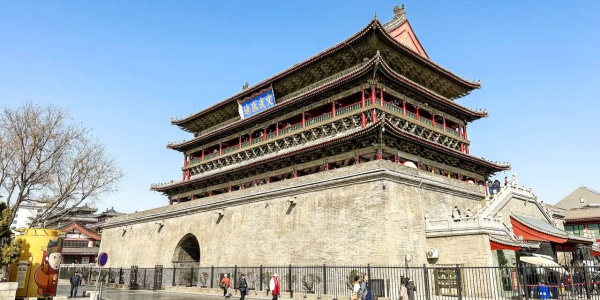
The entire tower structure is made without the use of iron nails. It incorporates architectural styles from the Tang Dynasty, utilizing innovations from the Song Dynasty to create a spectacular overall appearance.
● Xi'an Museum
The main hall is circular, featuring a mosaic of a historical map contrasting ancient and modern Xi'an at its center, which is very interesting. The smallest section in the middle represents Ming and Qing Xi'an; the deep red area is the largest, representing the Sui and Tang Dynasties; the dark gray area represents Han Chang'an; and the yellowish area at the top left represents Qin Xianyang. The museum has three levels: two above ground and one underground.
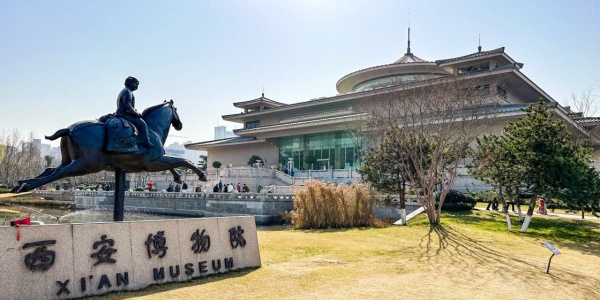
It houses nearly 130,000 historical artifacts, including over 14,400 precious cultural relics of national level and above. Most artifacts were unearthed from the Zhou, Qin, Han, and Tang dynasties. Compared to the Shaanxi History Museum, there are fewer tourists here, and the viewing environment is relatively better, much quieter. The Small Wild Goose Pagoda is the largest artifact in the Xi'an Museum and reflects the ancient capital’s characteristics and long-standing cultural history.
● Small Wild Goose Pagoda
The Small Wild Goose Pagoda may not be as famous as the Big Wild Goose Pagoda, and it certainly lacks the entertainment facilities surrounding the latter. However, I believe it is still worth a visit.
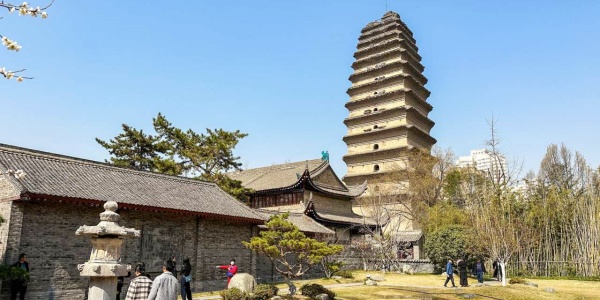
Like the Big Wild Goose Pagoda, the Small Wild Goose Pagoda is located within the royal temple Jianfu Temple and was built during the Tang Dynasty, completed in 707 AD. Due to its smaller scale, it is referred to as the Small Wild Goose Pagoda and served as a site for the translation of Buddhist scriptures.
● Daci'en Temple & Big Wild Goose Pagoda
Compared to the Small Wild Goose Pagoda, the Big Wild Goose Pagoda attracts many more tourists, with numerous travel groups around. Personally, I feel that the Big Wild Goose Pagoda is a bit overly commercialized, with more shops around than the site itself, including large theaters.
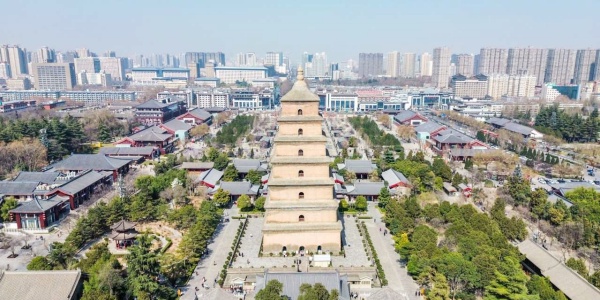
Daci'en Temple was built by Emperor Gaozong of the Tang Dynasty in memory of his mother and was the largest temple during the Tang era. Later, the monk Xuanzang translated scriptures here, which further added a layer of historical and cultural significance to the temple. Inside the temple, it is quite quiet, and there is no feeling of a crowd; you can see the Big Wild Goose Pagoda from various angles.
For dinner, we dined at Da Qin Noodle House, a well-known chain of Shaanxi noodle restaurants. Even as a chain, the flavor was still exceptional.
● Tang Paradise
Tang Paradise is centered around Furong Lake, encompassing many attractions such as Ziyun Tower, Lu Yu Tea House, and Fengming Jiutian Theater, which are distributed around the lake. The entire park is divided into twelve cultural theme areas, showcasing the splendid civilization of the Tang Dynasty with themes ranging from emperors, poetry, folk culture, to food and dance.
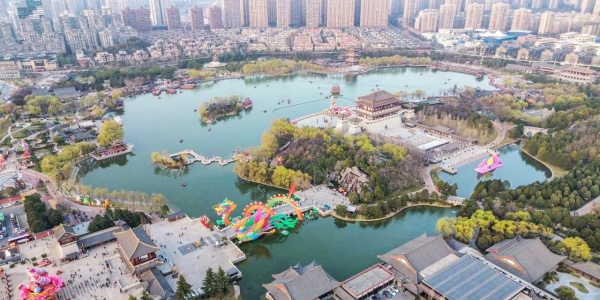
When visiting Furong Park, it is suggested to enter from the west gate (the main gate, also called the Imperial Garden Gate) and follow the lakeside path in a clockwise direction to tour all the attractions.
Now, we’re preparing to walk to Tang Night City.
● Grand Tang Dynasty Ever Bright City
If the new spring lantern festival at Tang Paradise can be described as "spacious with few people," then Grand Tang Dynasty Ever Bright City is best characterized as "crowded with people." With so many tourists, please take care of your belongings and look out for elderly or young companions.
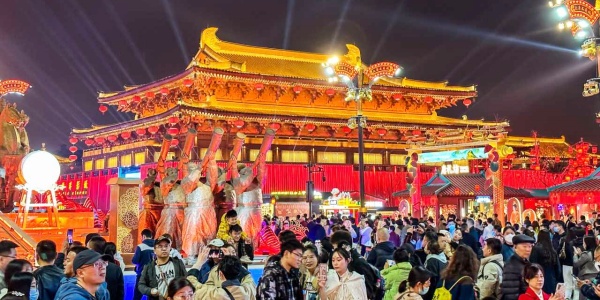
Actually, Grand Tang Dynasty Ever Bright City is not a single tourist attraction but a central pedestrian street about 1500 meters long, featuring nine theme groups of sculptures portraying emperors, historical figures, and heroic stories, vividly showcasing the position of the Tang Empire in religion, literature, art, and technology, as well as displaying the grandeur of a great nation.
Day 3
● Guangren Temple
Guangren Temple is located in the northwest corner within the Xi'an City Wall. It is a temple of Tibetan Buddhism. Overall, Guangren Temple is definitely worth a visit, doesn't require a reservation during the off-season, and entry is free.
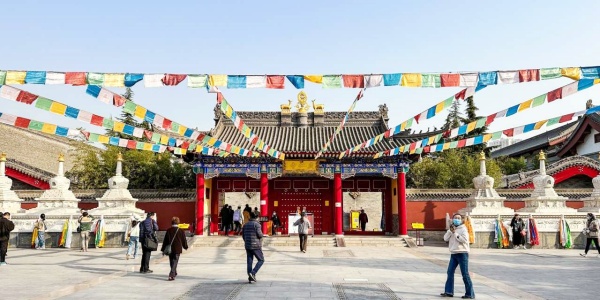
Although Guangren Temple is small, there are plenty of sights to see. It houses one of only two twelve-year-old statues of Buddha in the world, along with the largest Avalokitesvara statue in Shaanxi Province, and it features China’s only exquisite Thousand Buddha Hall. Moreover, it is also the worship place of Princess Wencheng in Chang'an.
● Sajinqiao
There is a place in Xi'an that locals know well but may be unfamiliar to outsiders. It is not a tourist spot and is unremarkable. However, in the eyes of Xi'an locals, Sajinqiao is indeed a treasure.

Sajinqiao stretches from the north end of Damai Street to the old Guan Temple intersection in the middle of Lianhu Road, covering 800 meters. In this stretch, there are many delicious Xi'an foods. Along both sides of the street, there are many traditional shops, making it a gathering place for authentic Xi'an culinary delights that only the locals are familiar with.
